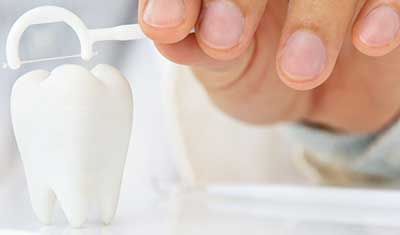Hate Flossing? Here are Some Alternative Methods to Try

Flossing is required in order to practice good oral hygiene. Every time we eat, leftover food particles get stuck in the mouth and between the teeth. Even though saliva acts as a natural cleaning agent that washes away tiny bits of food debris, it alone cannot be relied on. There will always be traces of leftover food debris in the teeth and gums that need to be brushed and flossed to be removed. Other than saliva that acts as a cleaning agent, there are also natural bacteria present within the mouth that help breakdown food build up. However, the bacteria leaves behind plaque, which needs to be removed. Flossing helps to remove the food debris and plaque from areas that are hard for a toothbrush to reach. If you think flossing is not as essential as brushing, think again. A toothbrush can only reach 60% of the tooth surfaces. Therefore, not flossing can increase your chances of tooth decay, gum disease, and inflammation of the mouth.
For some people, flossing can be one of the most difficult habits to adopt. Similarly, many people hate the traditional way of flossing because it may be difficult for them, especially to reach the back teeth, if they are traveling, or have braces or permanent retainers. If you are one of these people, thankfully there are many alternative options you could try.
Here is a list of 4 flossing alternatives:
Interdental Brushes
An interdental brush is a small brush specifically designed to clean between the teeth, in areas a normal toothbrush cannot reach. These brushes are usually easier to use than traditional dental floss and are the best option if you have braces. A daily routine that combines both regular tooth brushing and the use of an interdental brush is an efficient way to keep teeth healthy and prevent cavities, gum inflammation, periodontitis, and bad breath. Five steps must be followed to use an interdental brush correctly:
- Choose the right size
- Insert it gently, never force it into a space
- Move the full length of the brush back and forth a few times in each space
- Always change the size or curve the neck of the brush when needed
- Change the brush when the filaments become worn out
The optimal cleaning method differs for each person. It must suit the needs of every mouth, tooth, and gap. Always seek professional help for choosing the right sized brush and the cleaning method that works best for you.
Oral Irrigators
Water flossing is an alternative flossing method that uses a stream of water to clean between the teeth and around the mouth. Water flossing requires a handheld device, called a water flosser or water pick. A water flosser is designed to spray a stream of water at steady pluses. The water should be aimed between the teeth to remove plaque and leftover food particles. Water flossers have been approved of being effective at removing plaque, which helps reduce the risk of cavities, gum disease, and gingivitis. A popular water flosser out in the market is the Waterpik. All Waterpik water flossers includes a motor with a pump, water reservoir, and a special water flossing tip. Dentists recommend the Waterpik because it is effective, fast, and easy. Water flossers are an excellent alternative for people with braces, have permanent or fixed bridges, crowns, implants, or if you just have difficultly flossing by hand.
Dental Floss Picks
A dental floss pick is a plastic tool, with a curved end that holds a piece of dental floss. The other end acts as a wooden toothpick, but plastic. It is great for removing large leftover food particles. There are various types of floss picks to choose from. There are disposable floss picks. Others only have disposable headpieces. Some even have a grip on the handle for hand comfort. In addition, some come with a built-in tongue scraper, and many have child-friendly designs. If you want to get fancy, there are even battery-operated dental floss picks, which vibrate to massage your gums and clean around them. Many people prefer them over regular dental floss because they are easier to use, especially when trying to reach the back of the mouth. However, unlike regular floss, floss picks limit your ability to reach different angels. Although, studies show that both regular floss and floss picks are effective when used regularly and correctly. Researchers also found that both regular floss and floss picks reduce plaque sores. No significant difference was found between the two.
Dental Tape
Dental tape floss is very similar to regular floss and you would use it that same way too. However, dental tape is a newer option made from plastic. It is much broader, flatter, and has a bit more stretch to it. Tape floss is usually recommended for people with wider gaps in their teeth. Tape floss has a large surface area and thick texture to help fit in between the hard to reach areas, and clean them more efficiently. Thus, it would be more effective to remove the plaque and food particles. Some people prefer dental tape over regular floss because of how it can easily slide in and out of the gaps between teeth. Hence, this feature allows the dental tape to give your teeth a more thorough clean. Additionally, dental tape does not suddenly snap or jab the gums the way traditional floss sometimes does.
In the end, it is your decision. Whether you prefer to use interdental brushes, water flossers, floss picks or floss tape, they all work to help reduce your chances of tooth decay, gum disease, and inflammation of the mouth. What's important is that you floss your teeth every day. Daily flossing is essential and makes a big difference in maintaining your oral health. The choice of flossing method is yours, just be sure to use it every day!


